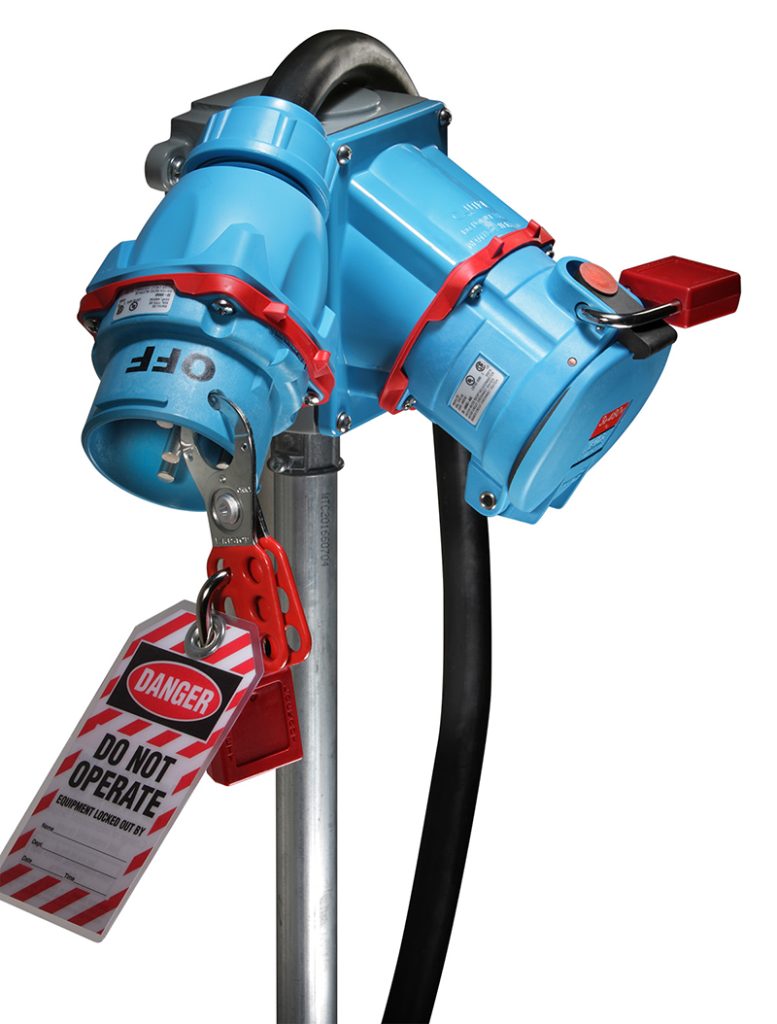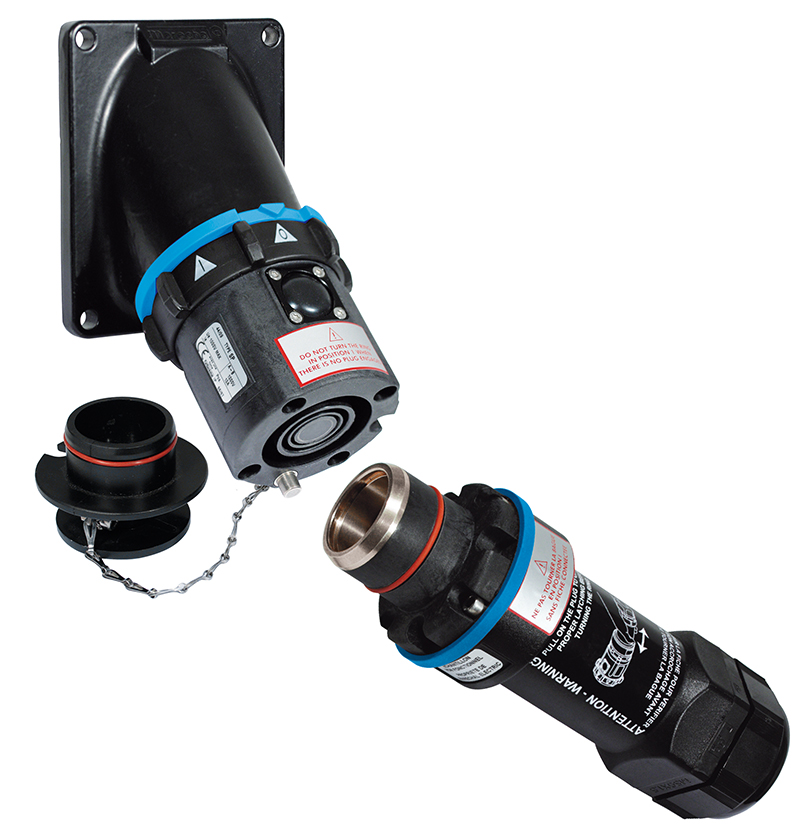The Purpose of Lockout/Tagout (LOTO)
Lockout/Tagout (LOTO) procedures are a safety must for controlling hazardous energy. The Occupational Safety and Health Administration (OSHA) specifically states that it is "the employer's responsibility to protect workers from hazardous energy."
<View the OSHA LOTO Fact Sheet Here>
The purpose? To ensure worker safety, reduce accidents, and eliminate live electrical hazards by physically blocking the electrical connection point of a plug, receptacle, power source, or device. This means of physical (locks & hasps) lockout and visual tagging notifies users that they are not to connect, restart, or energize a device or part of the installation. MELTRIC® products are uniquely designed to meet the requirements of the LOTO procedure.
MELTRIC makes it easy to facilitate the LOTO procedure. Most MELTRIC devices can be locked out using a padlocking device, a lockout pin, or a mechanical lockout. Please note that this is not always possible at the cabinet level.
Integral LOTO on ALL Switch-Rated Devices
All Switch-Rated MELTRIC devices include standard provisions (on the plug). This allows users to perform lockout/tagout by simply inserting a lock through an existing hole on the device. The user only needs to provide the lock – no additional mechanisms are required.
How LOTO is Achieved with the MELTRIC Series of DSN, DS, and DR Series of Plugs and Receptacles
Unique Advantage of MELTRIC Device LOTO
While the LOTO procedure can be very restrictive, requiring the shutdown of an entire installation, it is necessary for the safety of employees. Thanks to MELTRIC® devices, it is possible to carry out local lockout, thus optimizing the continuity of operation of the site by locking out only one machine.
Different MELTRIC® Locking Devices
Mechanical Lockouts

Pilots

Locking Pins

Try a MELTRIC Device Today!
About the Author:

Grant Zwicke is a leading content marketing creator at MELTRIC® and a member of the marketing team. His varied experience includes pharmaceuticals, medical devices, specialty chemicals, public health, scientific research, publishing, television entertainment, and news media.









